What we treat
- Ingrown Toenail Removal
- Verruca treatment
- Treatment for Fungal toenails
- Toenail reconstruction
- Biomechanics
- Orthotics
- Foot Mobilisation
- Corn and callus removal
- In-growing toenail care
- Infections
- Simple toenail cutting
- Athlete's foot treatment
- Chillblains
- Blisters
- Bunions and hammer toes
- Diabetic and other high risk treatments
- Padding and strapping as required
- Foot health advice
- Dressings when needed
More information
Ingrown Toenail Removal
If you are suffering with the pain of an ingrown toenail, we can sort that for you. A quick minor surgical procedure, done on a toe that we numb, is likely to be your solution.
Here are a few photographs of toes that have needed nail surgery.
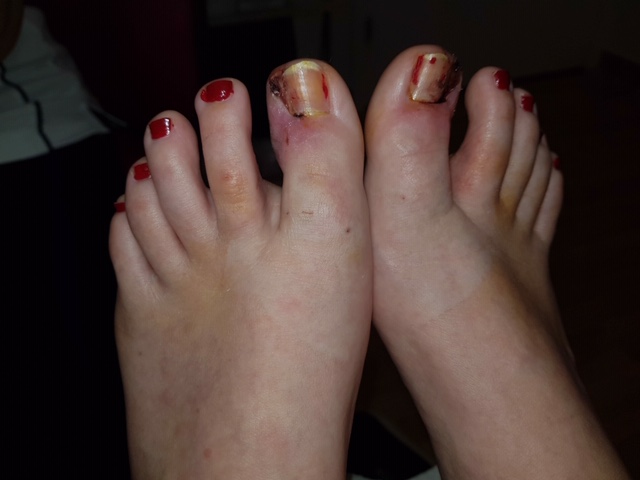
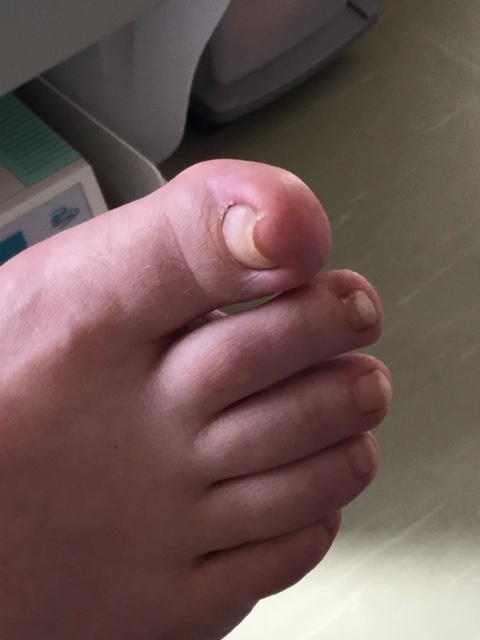
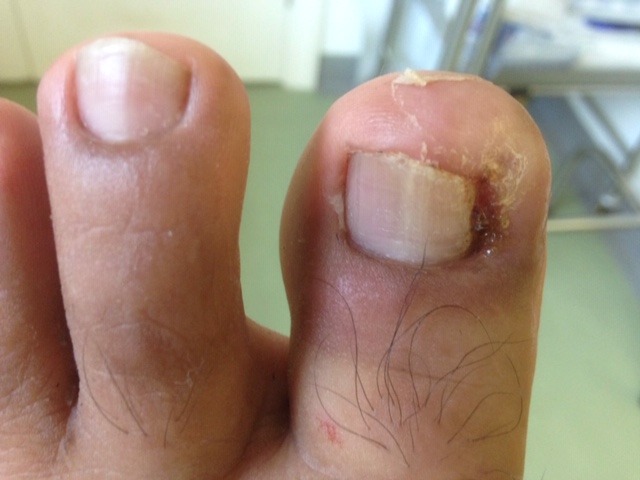
Verruca Treatments
Verrucae can be treated in a number of ways.
Swift is a new technology, developed in the UK, and uses microwave energy delivered through a special probe applied to the skin, to treat verruca or wart tissue.
You can find out more about Swift Microwave therapy here and here.
Needling is another option that we offer for the treatment of some verrucae. Following the appropriate local anaesthetic, a hypodermic needle is used to repeatedly puncture the verruca, with the aim of triggering an immune response. This treatment has been evidenced to be up to 69% successful.
We can also offer cryotherapy (freezing) and treatments using carefully controlled acids. Normally a course of treatment is recommended – 5 or 6 treatments every 1 – 3 weeks apart (dependent upon the treatment).
Treatment for Fungal toenails
Clearanail is an exciting new method for treating fungal nails (onychomycosis). Clearanail is based upon Controlled Micro Penetration, which makes tiny holes in the nail plate. The holes allow topical treatments to reach the nail bed in much higher concentration levels than otherwise possible.
Controlled Micro Penetration prevents injury to soft tissue i.e. only the nail is penetrated. So no pain is felt during the treatment.
Early research has shown that the technique enhances the delivery of antifungal drugs to the nail bed, and it is safe and effective (Bristow and Score, Journal of Drugs in Dermatology, 2016). A further study has concluded that treatment with holes plus topical terbinafine produces significantly greater improvement in toenails’ appearance and higher mycological cure rates compared to treating the nail plate with terbinafine alone. (Shemer et al, Journal of Dermatological Treatment, 2016).
Lacuna is another method of drilling holes in nails enabling better penetration of anti-fungal spray. The drilling is done freehand by the podiatrist.
Toenail reconstruction
Toenail reconstruction can be undertaken for nails damaged by fungal infection, trauma, surgery and for cracked or split nails. The LCN/Wilde Pedique system is used, which is a highly effective cosmetic solution using an elastic UV gel that adapts to the movements of the toe.
Damaged nails can be a source of distress or embarrasment for some people. Wilde Pedique can offer a cosmetic solution and lasts for around 6 weeks.
Before
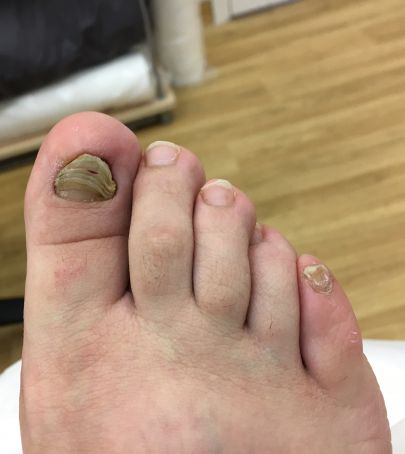
After
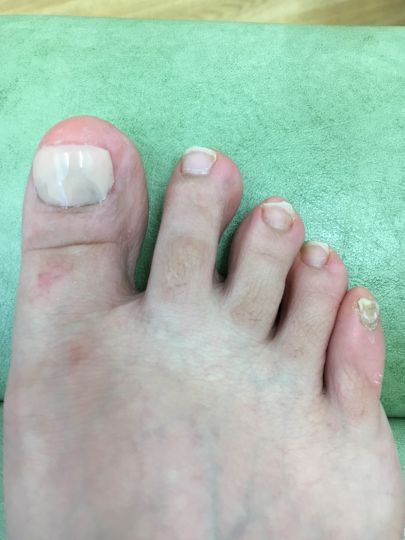
Painted (by patient)
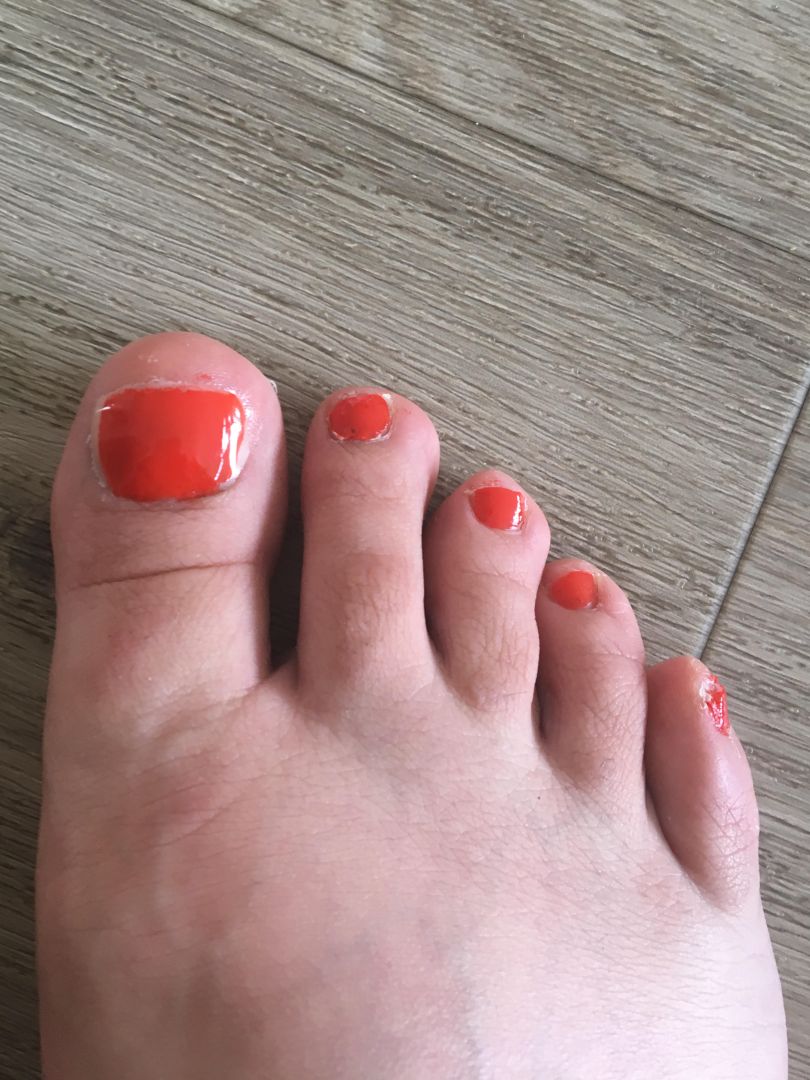
Biomechanics
This is the assessment of foot function and locomotion with the aim of improving pain and walking or activities
Orthotics
These are devices that fit in to shoes and are specially modified for individual needs. We use various types at St. John's Foot Clinic including ”Vasyli” orthotics which are heat moulded and customised to your needs. We can also provide fully customised orthotics which are built form a cast of the feet.
Foot Mobilisation
Foot mobilisation uses gentle techniques to improve the range of motion available in the joints of the feet. This is especially useful where the feet have become stiff or painful, for example, due to trauma or disuse.
Diabetic and other high risk treatments
This generally involves foot care of people with poor blood supply to the feet, diabetes and people on certain drugs e.g. warfarin or other drugs that suppress the immune response e.g. steroids. The NICE guidelines for diabetes and Diabetes UK recommend that all people with diabetes have an annual foot check. This can easily be done by assessing the blood (vascular) supply, the nerves (neurology) and by fully examining the feet. This can be incorporated in to your regular appointments.
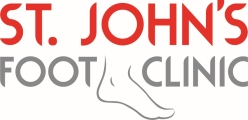

 Call Us Now
Call Us Now